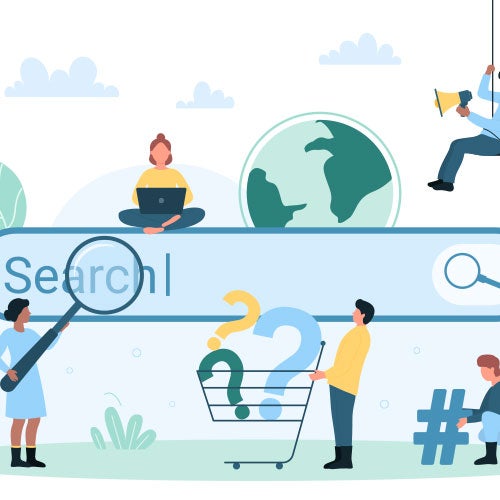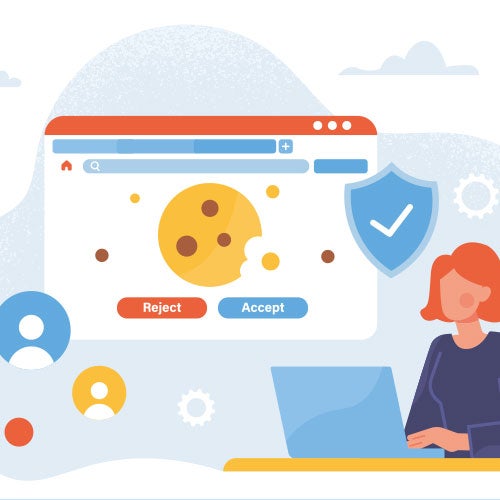Posted on 1/7/2016 in Digital Marketing
By Dean Dorazio
Many students complain of increasing tuition rates for higher education. Many marketing managers for higher ed institutions complain about the rising cost for paid search (PPC) and overall cost per lead in their highly competitive industry. This raises a couple of questions: “Why is PPC for higher education so expensive?” and “What do I do to reduce my cost per lead?”
Luckily both of those questions can be answered right now.
Why PPC Is Competitive for Higher Education
Pay per click platforms like Google Ads are notorious for being expensive, especially with the increasing cost of Google Ads. From 2012 to 2014 the average cost per click rose 40%!
- Google Ads Follows an Auction Forma
- This is largely due to Google Ads’ auction format. More people are realizing the benefits of a strong online marketing presence which means they are starting their own PPC campaigns. With more people bidding for valuable keywords, their prices inevitably go up. More people have money to devote to the words for which you want to rank as well.
- Google Ads Is an Online Billboard
- Marketers are willing to put more money towards ad spend because they are purchasing premium online real estate. Their ads show at the top of search results that tens of thousands of eyes see. This results in brand awareness even if the users don’t click on it. People see the ad and when it gets repeated, they can recognize the name in the future when they’re looking for your services again.
- Higher LTV, Means More Money to Spen
- That’s why Google Ads is so competitive and costly in general terms, but why specifically in the higher ed industry? Marketing for colleges and universities is tricky because of how desirable students are. They have a large Life Time Value (LTV), or in laymen terms: creating a relationship with this customer will result in profit for you. With a greater reward, more higher education marketers are willing to spend larger sums to obtain the lead. With more money going around, the ad space becomes more expensive.
Now you understand why PPC for higher education is so expensive, we can focus on how to reduce your cost per lead. Testing and altering your website for conversion optimization can lower your overall CPL. Here’s how:
Conversion Optimization Can Lower CPL
The goal of conversion optimization is to increase the number of leads without increasing ad spend. To achieve this, you need to tailor your website’s pages, content, and layout towards fulfilling your customers’ needs. That way they will take you up on whatever offer you provide and give you their information and become a lead, or better yet, you can turn a lead into a sale.
When it comes to conversion optimization, you have two main methods of obtaining leads: Pay Per Click Advertising and Search Engine Optimization (SEO). PPC is, obviously, a monetary-based endeavor which can reach more people with more money, if your site is already converting well. SEO is a more cost-effective strategy that takes longer to show results. This all begs one question, “What do I focus on?” The answer’s simple: both!
SEO and PPC Must Be Optimized Separately
There is one quick caveat before explaining how to optimize for conversion. When you optimize for SEO, you may lower your PPC conversion rates and vice versa. So if you keep updating your website for one then the other, it becomes counterproductive and a waste of your time and money. That’s why you need to understand the behavior of the average users dependent on the channel they use to enter.
SEO can have users anywhere on the funnel, but often towards the top. Whereas people who enter through PPC are usually ready to buy right then and there. If these two disparate demographics are sent to the same landing page if one is pleased, the other will most likely not be satisfied and leave never to return. That’s why having separate landing pages tailored to your audience is so important.
Optimizing for PPC Conversion
Utilizing PPC to capture leads is more straightforward as the users often are ready and willing to purchase the service that you offer (even if the price is just a little information about them). Your task is getting that appropriate ad in front of their eyes (preferentially under related keywords) and then having captivating copy to get them to click.
The best way to ensure converting a PPC user is to send them to a dedicated landing page optimized for PPC traffic. If the landing page does not fulfill their expectations by providing the information they desire in an elegant, intuitive, and accessible format, then they will leave, costing you money without any reward.
The other technique to improve conversion is to minimize distraction. Do not present any links or information that stops them from completing your desired action. Once they have converted you can send them to a landing page full of pertinent information to keep them on your site or simply just asking for more.
Optimizing for SEO Conversion
If you’ve optimized separate landing pages for your PPC campaign, then you can update the rest of your website to rank for organic traffic. Assuming you know the general best practice for SEO, then you need to focus your content to be informative to your audience. These users are at the top of the funnel, or the Awareness stage. They’re learning about your school and could be years away from actually applying to college. The best course of action is to supply them with unbiased information and build trust.
Your goal is to guide these users through their decision-making process by teaching them about the industry. If you force them along your desired path, they notice and bounce. However, if you inform them of valuable information, they will create a positive association with your school and possibly realize that you are the best choice for them. At this point, you have a passionate, advocating customer because they came to that conclusion themselves.
This multi-touch experience (when a user leaves and returns to your website multiple times) leads to converting stronger, better leads because you have become a recognizable name. Your school is a thought leader, an exemplar of your industry, for them. So when the time comes that they need to apply to a school, they go to your site organically or remember you when they see your PPC ad.
Conclusion
When working together, PPC and SEO can boost each other’s effectiveness and lower the overall CPL. It’s your job to make sure that each avenue is modified for the respective clientele. And afterward, you need to continually A/B test and improve little by little. Over the course of time your website will look entirely different, but it won’t be daunting because you handled it in manageable chunks. Through this, you kept improving your conversion rate and lowering CPL. Wasn’t that easy?
Any other ideas? What does your school do to capture leads without increasing ad spend?
Related Articles

Elevating Your Brand: The Transformative Power of Website Design
In the digital age, your website is often the first point of contact between your brand and potential customers. It's not just a platform to showcase [...]

Navigating the Effects of SEO Algorithm Adjustments in 2024 on Your Website's Rankings
In the fast-paced world of digital marketing, staying ahead of algorithm updates is crucial for maintaining a competitive edge. As we step into 2024, [...]

Rethinking Digital Strategies: Marketing in the Post-Third-Party Cookie Landscape
In the ever-evolving realm of digital marketing, the impending demise of third-party cookies poses a significant challenge for businesses worldwide. [...]

